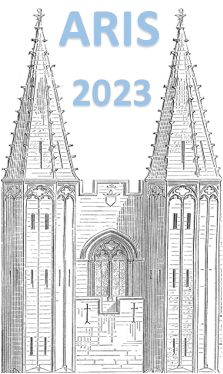Orateur
Description
The $\beta$-decays of $^8$Li and $^8$B provide an important playground to search for physics beyond the Standard Model, and, additionally, a detailed study of $^8$B $\beta$-delayed $\alpha$-particles provides key insights needed to constrain the spectrum of high energy neutrinos emitted by the Sun. To accomplish both these aims, the $\beta$-decays of $^8$Li and $^8$B were studied with the Beta-decay Paul Trap (BPT) at the ATLAS facility of Argonne National Laboratory. The BPT traps a cloud of ions at rest in a volume of ~1 mm$^3$ for extended periods of time, allowing for a backing-free measurement of the emitted particles. The trapping volume is surrounded by segmented, 1 mm thick DSSDs, from which the decay kinematics can be fully constrained by a $\beta$-$\alpha$-$\alpha$ triple coincidence measurement. This enables both a nearly background-free measurement of the $\beta$-$\nu$ angular correlation coefficient $a_{\beta \nu}$, while a $\alpha$-$\alpha$ double coincidence measurement enables a determination of the $^8$B neutrino energy spectrum.
We will present (1) recent results in $^8$Li, showing the most precise measurement of $a_{\beta \nu}$ in a GT decay and highlighting both the possibility of a ~9 MeV $2^+$ “intruder state” in $^8$Be and the importance of accurate values for the recoil-order terms, (2) the first measurement of $a_{\beta \nu}$ in $^8$B and a method to constrain $C_T$ and $C_T'$ in the decay of mirror systems, and (3) the preliminary analysis of a high statistics $^8$B dataset to determine $a_{\beta \nu}$, and a new determination of the neutrino spectrum following $^8$B $\beta$-decay, which is important for the next generation of solar neutrino experiments.
We acknowledge the U.S. DOE Contract No. DE-AC02-06CH11357 [ANL] and DE- AC52-07NA27344 [LLNL], the Argonne National Laboratory ATLAS facility, which is a DOE Office of Science User Facility, and NSERC, Canada, Contract Nos. SAPPJ-2015- 00034 and SAPPJ-2018-00028.

